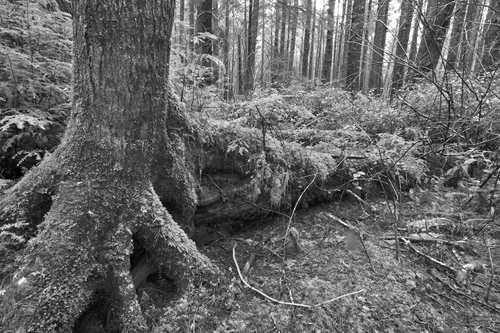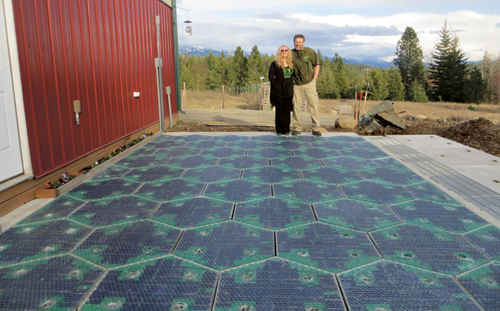
Dear EarthTalk: What are some New Year’s Resolutions I can make to help the environment? ~ M. Lind, Sturges, MI
Given the escalating environmental challenges facing our planet, directing some of our New Year’s aspirations toward eco-conscious endeavors can make a tangible difference. Luckily there are lots of ways to put your resolve to work for the planet…
For starters, one of the most impactful resolutions is to adopt a more mindful approach to consumption. Commit to reducing waste by embracing practices like reusing, repurposing and recycling. Shift to buying reusable items and those with minimal packaging. Support brands committed to sustainable practices. Minimize your use of single-use plastics, another way to make a big impact without much effort. Choose stainless-steel water bottles, cloth shopping bags and glass food containers. Say no to plastic straws, cutlery and excessive packaging whenever possible.
Making more sustainable food choices is yet another way to make 2024 greener than 2023. Adopting a more plant-based diet or reduce meat consumption to significantly reduce environmental impact. Pledge to support local, organic and sustainably sourced foods. Also, strive to reduce food waste by planning meals, composting organic waste and supporting initiatives that redistribute surplus food to those in need.
Another resolution that of us can make is to reduce personal carbon emissions. Embrace alternatives to fossil fuel-based transportation by walking, cycling, carpooling or using public transit. Also, consider investing in energy-efficient appliances, using renewable energy sources, and supporting initiatives that offset carbon emissions. While they might not be top of mind, changing up daily habits can also reduce your carbon footprint and overall environmental impact. Conserve water by fixing leaks, taking shorter showers and using water-saving appliances. Grow your own food, support local biodiversity by planting native species, and prioritize eco-friendly practices in your daily routine.
Another way to create positive change is to speak out more for environmental policies and initiatives. Support community groups and environmental organizations, and join in local clean-up efforts or conservation projects. Engage in discussions, educate others, and advocate for sustainable practices in your workplace, schools and social circles. Spread awareness about environmental issues and inspire others to take action. Share information on social media, organize educational events, or start a community garden or recycling program. Encourage friends, family and colleagues to join in your eco-friendly endeavors, fostering a collective effort toward a greener future.
Making a resolution is just the first step—commitment is key to achieving lasting change. Progress may require adjustments and perseverance, but every step contributes to a healthier planet. By incorporating these resolutions into your New Year’s goals, you become an active participant in the global movement toward environmental stewardship. Together, let us embark on this journey to protect and preserve the natural world we all call home. Cheers to a more sustainable, eco-conscious year ahead!
CONTACTS: 10 Sustainable New Year’s Resolutions, https://www.centerforecotechnology.org/10-easy-green-new-years-resolutions/; 12 Actionable and Sustainable New Year’s Resolutions, https://greencitizen.com/blog/sustainable-new-years-resolutions/.
_______________________________________________
Dear EarthTalk: How much “old-growth” forest is left in the U.S. today and what are we doing to protect it? ~ Paul Belaire, Chico, CA
Scientists have found it tough to settle on a precise definition for old-growth forests. There’s no single formula to determine what is considered an “old” tree, and growth rates among tree species are varied. Some species have ages at which they can be considered “old.” At 80 years, Gambel oaks are considered old-growth, but for bristlecone pines it is 300 years. In general, old-growth forests are areas of land with layers of undisturbed trees and vegetation. Prior to becoming old-growth, trees enter a stage where they are considered “mature.” Mature forest definitions are even broader and have no specific age.
One categorization system that Wilderness Society scientists have proposed is to base a tree’s maturity on its “biomass”—the amount of collected carbon stored in the tree. One of the reasons that old-growth forests are important is that the trunks and branches of old trees store large amounts of carbon and thus are crucial to fighting climate change because they absorb more carbon than they release into the atmosphere. When these trees burn in wildfires, like the ones that have devastated California in recent years, the carbon is released back into the atmosphere.

In early 2023, the U.S. initiated its first national inventory of mature and old-growth forests. It revealed more than expected, showing that the U.S. Forest Service and Bureau of Land Management collectively oversee over 50,000 square miles of old-growth forests and 125,000 square miles of mature forests. Most of this land is in the West and together covers an area larger than California. Of all of the U.S. forests, only about six percent are old-growth. Decades of logging, development, drought and wildfire have torn through the forests, heavily decreasing their numbers. Some 32 percent of U.S. forests are considered mature, and it’s equally important to protect these so that they can one day become old-growth forests.
Recent actions by the Biden administration have moved to conserve groves of old-growth trees. The proposal would limit commercial timber harvesting in old-growth forests, while allowing logging in mature forests that are not considered old yet. This proposal is somewhat controversial, as many believe that the government should be thinning out forests to reduce wildfire risks. Earlier this year, the Biden administration also reinstated roadless forests protections in Southeast Alaska’s Tongass National Forest, one of the last intact temperate rainforests in the world. Indigenous communities there have been protesting destructive logging and development for years, and this achievement is a result of their efforts.
The Tongass Forest is a prime example of the change that can come through community efforts. The best way to help protect old-growth forests is to speak out. With enough public support, government agencies can be persuaded to enact stronger protection policies. Sign petitions, join protests, write letters to your representatives. Every bit of support can help.
CONTACTS: Mature and Old-Growth Forests: Definition, Identification, and Initial Inventory on Lands Managed by the Forest Service and Bureau of Land Management, https://www.fs.usda.gov/sites/default/files/mature-and-old-growth-forests-tech.pdf; US moves to protect old growth forests as climate change threatens their survival, https://abcnews.go.com/US/wireStory/us-moves-protect-growth-forests-climate-change-threatens-105767684; Tongass roadless protections reinstated: 4 reasons that’s great news, https://www.wilderness.org/articles/blog/tongass-roadless-protections-reinstated-4-reasons-thats-great-news.
_______________________________________________
Dear EarthTalk: Are solar roadways still a “thing”? Why don’t we have them everywhere now helping us keep our EVs charged up and rolling? ~ Jason M., Shelton, CT
In 2014 the concept of solar powered photovoltaic road panels that could collect sunlight and convert it into useable energy went viral when the Idaho-based company Solar Roadways heralded it as a solution to the global energy crisis. The company proposed developing solar-powered panels to form smart roads, highways and parking lots. These solar roadways would theoretically produce electricity while providing other smart features for the cars and trucks that drove on them.

According to Solar Roadways, the benefits of their solar roadways would be more than just the production of clean energy. The roads would provide heating to melt off snow and ice and would use LEDs for lighting and to warn about road obstructions. Solar roadways could also charge electric cars through inductive charging. This means that EVs would be charged just by driving on the solar roadways.
So why aren’t solar roadways being installed across the U.S.? Despite the possible benefits of solar roadways, implementation at scale would be quite a challenge. For one, since solar roadways would lie flat on the ground, they wouldn’t be ideal for maximizing their exposure to direct sunlight. On a regular solar farm, the panels are angled towards the sun to maximize efficiency, and even then, the typical solar panel can only use about 20 percent of the energy that the sun produces. It would be more efficient to run the solar panels alongside the road rather than on top of it. Creating solar roadways that can withstand heavy vehicle pressure while still letting in sunlight has been another difficult task. Also, there are safety and noise concerns. And the LEDs which would act as traffic lines and obstruction warnings are difficult to see during the day. Solar roadways are also incredibly expensive compared to regular old pavement.
While Solar Roadways has not implemented the concept as of yet in the U.S., there have been a few projects abroad that have attempted to turn the concept into reality. In 2016, the French company WattWay completed a 0.62-mile installation in Normandy, France. The project was met with excitement, but quickly fell flat as the road generated little energy and was unable to withstand normal traffic wear and tear. A similar thing happened in Jinan, China when in 2017 Chinese engineers constructed their own 0.62-mile solar roadway. It was closed within a week due to traffic damage and the theft of road panels.
While these false starts don’t bode well for the future of widespread solar roadways, EV charging roads may still be an option. In 2021 the state of Michigan pledged to complete a wireless charging road by 2023. The leading company in the project, Electreon, says that the EV charging road is complete, and will open to the public in the next few years after a testing period. The emergence of EV charging roads would promote the usage of electric cars and provide some reprieve from cars’ fuel emissions.
CONTACTS: All about Solar Roadways: the promise versus the reality, https://www.solarreviews.com/blog/all-about-solar-roadways; Understanding Solar Roadways: An Engineering Failure of Epic Proportions, https://interestingengineering.com/innovation/solar-roadways-engineering-failure; First wireless charging road in the U.S. completed in Michigan, https://www.teslarati.com/first-wireless-charging-road-u-s-michigan/.
_______________________________________________
EarthTalk® is produced by Roddy Scheer & Doug Moss for the 501(c)3 nonprofit EarthTalk. See more at https://emagazine.com. To donate, visit https://earthtalk.org. Send questions to: question@earthtalk.org.

